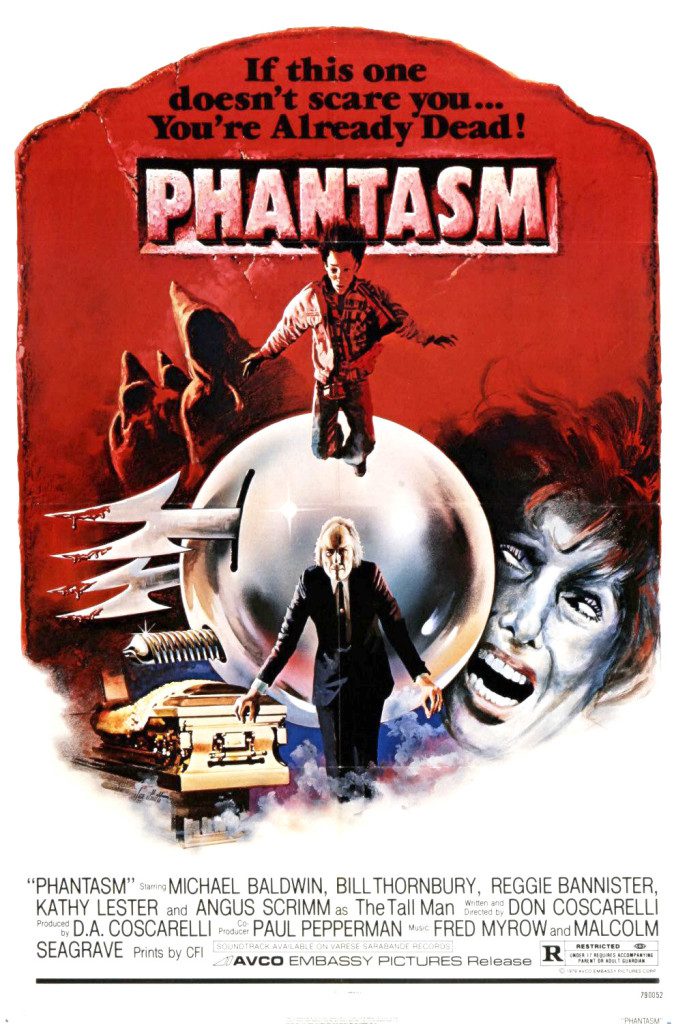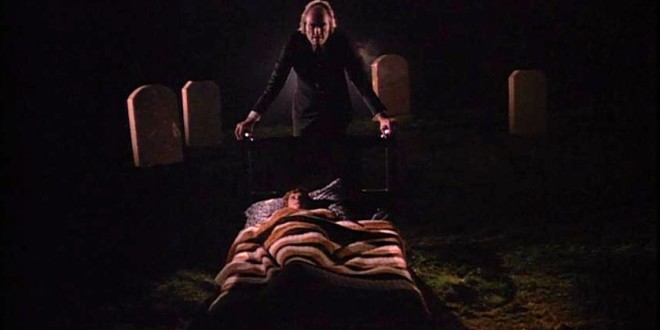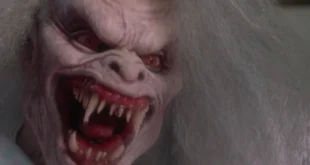The 4K restoration of the original Phantasm, spearheaded by J.J. Abrams and Bad Robot Productions, premiered at SXSW last week to tremendous accolades. It’s ironic, since critics weren’t nearly as kind when Don Coscarelli’s surrealist nightmare premiered on March 28th, 1979 (almost exactly 37 years ago). Trevor Johnston of Time Out described it as “a surprisingly shambolic affair whose moments of genuine invention stand out amid the prevailing incompetence.” Dave Kehr of the Chicago Reader called it “spotty” and only effective “here and there”. Vincent Canby of the New York Times compared it to “a ghost story told by a bright, imaginative 8-year-old”, ultimately deeming the film “silly”. Kim Newman of Empire called it “incoherent”, accusing Coscarelli of “deliberately” making no sense.
https://www.youtube.com/watch?v=xmcR8_2RinY
Yet in spite of these negative reviews with their back-handed compliments, Phantasm would evolve into a cult classic of immense proportions. The story of 14-year-old Mike (A. Michael Baldwin) and ice cream vendor Reggie (Reggie Bannister) locked in an epic battle with an alien manifestation of Death itself would go on to spawn 4 sequels (the latest of which, Ravager, has yet to be released). Most significantly, the fiendish mortician known as The Tall Man would become one of the most celebrated horror villains in genre history, cementing Angus Scrimm’s status as a bona fide icon; Scrimm passed away last January at the age of 89.
Coscarelli was a relatively inexperienced filmmaker when he set out to create Phantasm, his first venture into horror movie territory. The movie’s production was hardly a regimented industry operation; the cast was comprised of semi-professional and aspiring actors. Since they all had “real jobs” filming was restricted to weekends and took over a year to complete. Phantasm’s main financial backer was Coscarelli’s father and his mother was in charge of wardrobe and costumes. The budget was so tight that, in addition to writing and directing the film, Coscarelli served as cameraman and editor.

Still, Phantasm was a labor of love and Coscarelli’s dogged determination and genuinely innovative method of storytelling shines through in the final product. He took his inspiration from Ray Bradbury’s nightmarish novel, Something Wicked This Way Comes; and films like Invaders from Mars and Dario Argento’s Suspiria. He especially appreciated how these stories manage to captivate and terrify without offering concrete explanations; it was a tactic, he realized, that would keep viewers thinking and hypothesizing about the film long after its conclusion. Phantasm’s original running time was over 3 hours, further proof of Coscarelli’s unbridled artistic ambitions.
Phantasm purposely eschews the line between reality and nightmares; throughout the film, the audience is never certain if Mike is actually battling supernatural forces, or if he’s merely dreaming. But this is hardly an attempt by Coscarelli to pointlessly befuddle; it illustrates a young man coming to terms with the reality of death. In his dream world, Mike processes the loss of his parents and his brother, Jody (Bill Thornbury); death manifests as the monstrous Tall Man, a physical entity that can be confronted (even if it cannot be defeated).
Coscarelli’s incorporation of sci-fi elements into a horror movie is revolutionary; Phantasm involves interplanetary travel and alien manipulation, but it includes these elements without using spaceships or advanced technology. Rather, these tropes are approached and illustrated as metaphysical phenomenon, resulting in a low-tech yet effective merging of genres. The chrome spherical sentinels (taken straight from Coscarelli’s personal nightmares) defy classification as either supernatural or otherworldly, independently intelligent or robotically controlled. Besides the Tall Man himself, these levitating exsanguinators exemplify Coscarelli’s creative ingenuity and have become iconic in the pantheon of horror, as instantly recognizable as Freddy Krueger’s glove.

While its universal themes give Phantasm staying power, its endurance and surge in popularity over the decades is the result of its uniqueness. There’s simply nothing like it in the world of horror or sci-fi; it defies easy categorization and even transcends traditional filmmaking with intelligent arthouse aesthetics and sensibilities. As horror trends like slashers, haunted dolls, and found footage come and go, horror aficionados craving a unique and compelling experience are consistently drawn to Phantasm. While the film shows its age in terms of special FX and production value, it remains an exemplar of engrossing and effective horror cinema.
Hardcore “Phans” like myself have high hopes for 2016; the success of the 4K restoration and the passing of Angus Scrimm have stoked nostalgia to a fever pitch, and this bodes well for Ravager (which has yet to received a release date or distribution deal, despite having been completed back in 2014). Coscarelli has been notoriously controlling of the Phantasm franchise, but with such an important legacy to protect, his slow and careful maneuverings are understandable (if frustrating). I dream of a 4K Restoration and Ravager theatrical double-feature, and a complete “Phranchise” blu-ray release in time for the holidays—something that enshrines Phantasm’s place in history and properly memorializes Angus Scrimm.
Am I only dreaming?

If you can’t get enough of me here at Pop Horror, you can follow me on Twitter @josh_millican for quality horror articles worthy of your attention.
 PopHorror Let's Get Scared
PopHorror Let's Get Scared




